At a time when electricity prices continue to rise, solar power stations are all the rage. It must be said that they allow you to immediately and easily reduce your electricity bill. After testing the Sunology, Beem, ekwateur, and Supersola kits, here's a very interesting new challenger: the Sunethic F800 plug-and-play solar station. A product made in France, for which I even had the opportunity to visit the Systovi photovoltaic panel factory in Nantes. For those new to this type of product, this is a photovoltaic station that you can install yourself in 5 minutes. It simply requires plugging in a power outlet, and its energy production is directly deducted from the electricity you consume. With its 800Wp, this is the most productive solution I've had the opportunity to test, since the manufacturer chose to go directly with two panels! All while maintaining ease of installation, taking only a few minutes. Installed in my home for several days now, I invite you to discover it in more detail!Discovering the Sunethic F800 solar station The package I received is rather large, and for good reason: it contains two large photovoltaic panels measuring 1.83m x 1.04m (weighing 34kg each). Each panel is individually packaged, and the whole thing is delivered on a strapped pallet.The packaging clearly highlights its strong point: a French solution! A strong argument, because it's always foolish to ship products from the other side of the world when you want to do something for the environment :/ As we saw in a previous article, which I invite you to read, Sunethic is a mission-driven companywhose goal is to help both the planet and its customers. Of the price of this station, €6 is donated to the NGO Planète Urgenceto actively support the fight against global warming. Moreover, to further its “ethical” side, Sunethic had coloring pages printed on the back of the cardboard, allowing for reuse of the packaging. A rather nice and original idea, which will give this packaging a second life!Inside, of course, are the two panels, along with a small box of accessories:
The panels used here are Full Black models from Voltec Solar, a company based in Strasbourg. These are 400Wp panels made up of 126 high-performance M6-9BB monocrystalline half-cells.
These panels come with a 25-year warranty, with an 87% production rate guaranteed at 25 years. A relatively standard warranty, but the fact that we have a French manufacturer with many years of expertise in the field will undoubtedly facilitate warranty claims if necessary, unlike a Chinese factory.
The panels arrive with their support already assembled. A 100% recyclable galvanized steel support, powder-coated in black, also manufactured by a French SME in Provence.
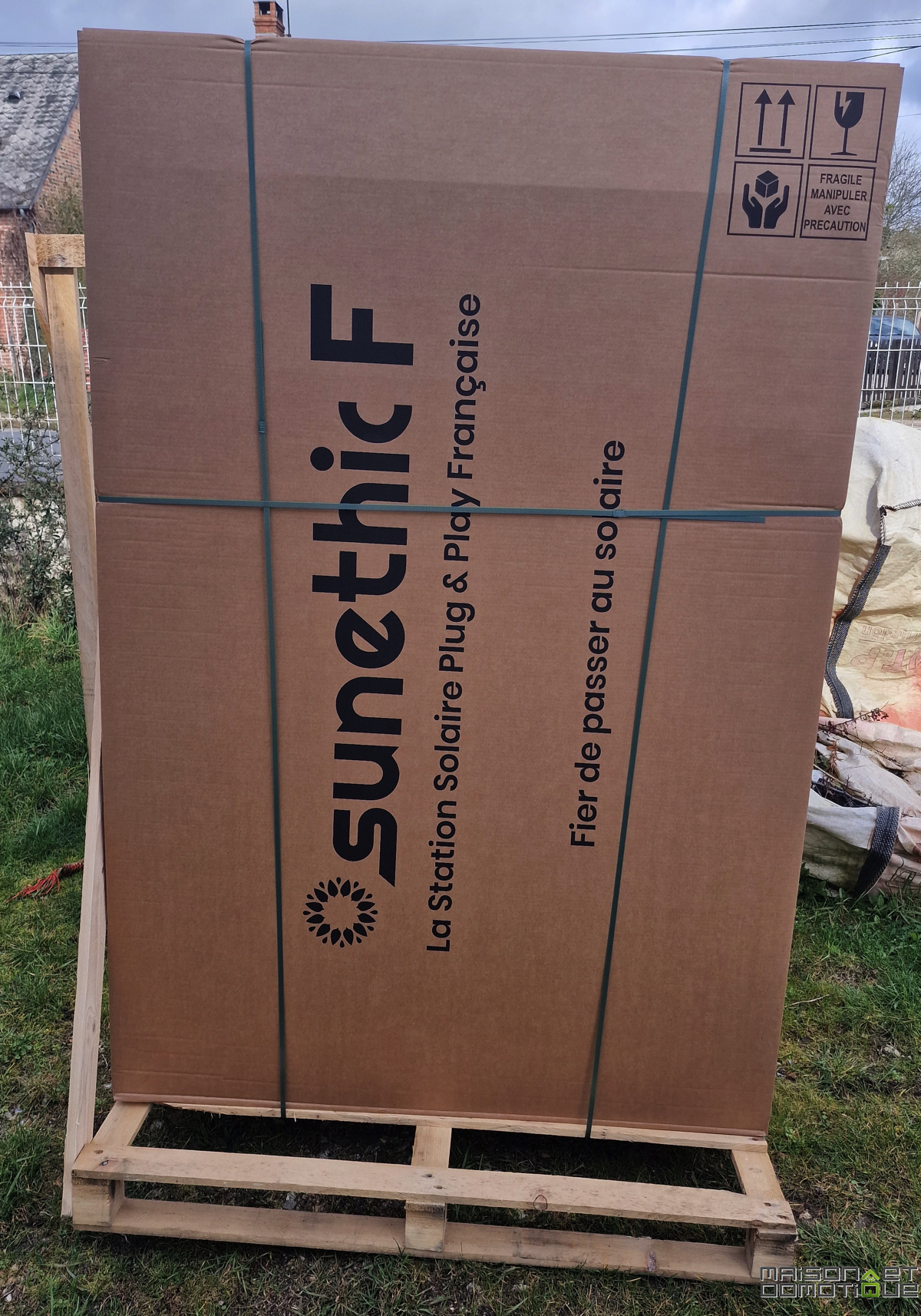
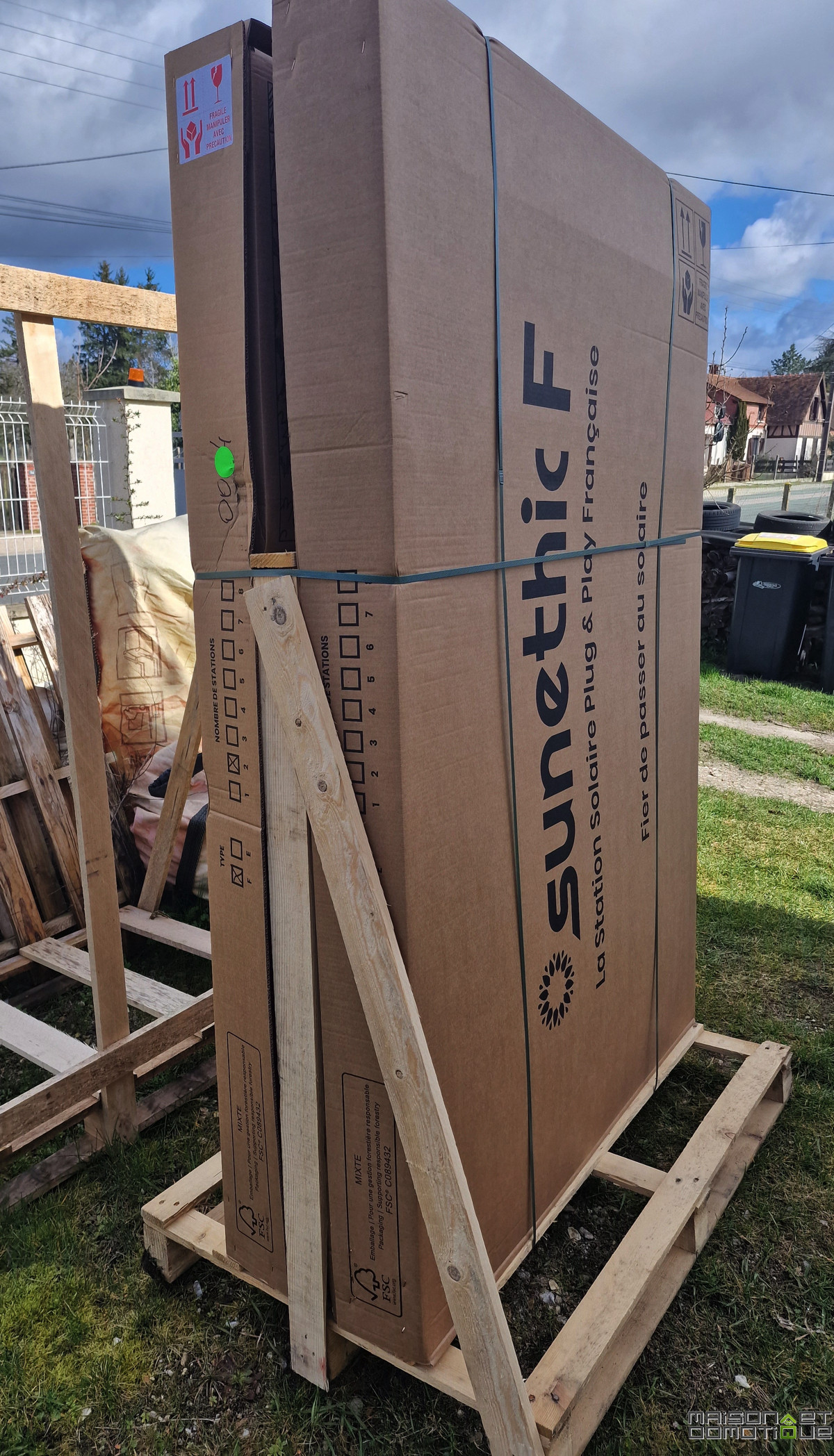
This metal structure was designed to be highly versatile, as in addition to being able to be placed or fixed, it can also be oriented at any desired angle. This is similar to what Sunology offers in 3 positions. However, by using galvanized steel instead of aluminum, the structure is much more robust. Also noteworthy are the holes already provided in this support, which allow it to be mounted on the wall if necessary. No additional fasteners are required; simply use the appropriate mounting screws. The support has several holes for wall or floor mounting.A small box of accessories accompanies the panels: 4 screws for the supports, but most importantly, the small ApSystems communication box, which will allow you to monitor your photovoltaic production.While competitors generally offer a 5-year warranty on the kit, sometimes with a distinction between the panel and the inverter, Sunethic guarantees the complete kit for 20 years, which is no small feat! There's no distinction between the panel and the inverter; it's 20 years for everything, period.All the wiring and electronics are located under the panel, including, of course, the DS3-L microinverter from ApSystems (maximum efficiency of 99.5%), which is already installed. This is the only component coming from Asia, due to the lack of a manufacturer in our region. However, it only accounts for 4% of the station's weight, which once again limits its carbon footprint.
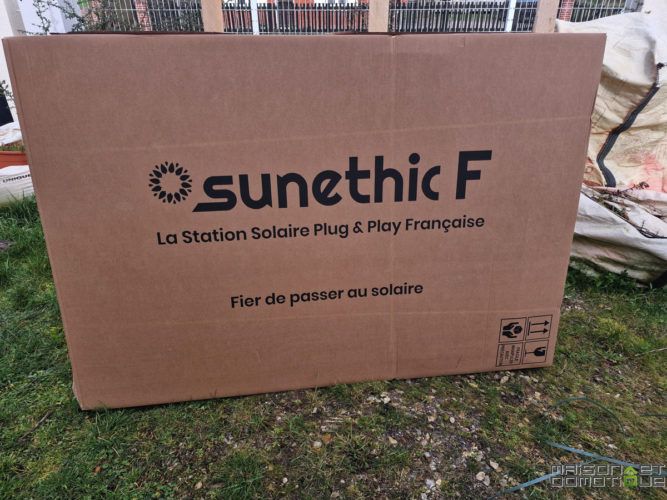
ApSystems is a renowned manufacturer in the field, used particularly by professionals. The inverter here is capable of managing two panels, so this Sunethic F800 station only has one microinverter to manage the entire station.
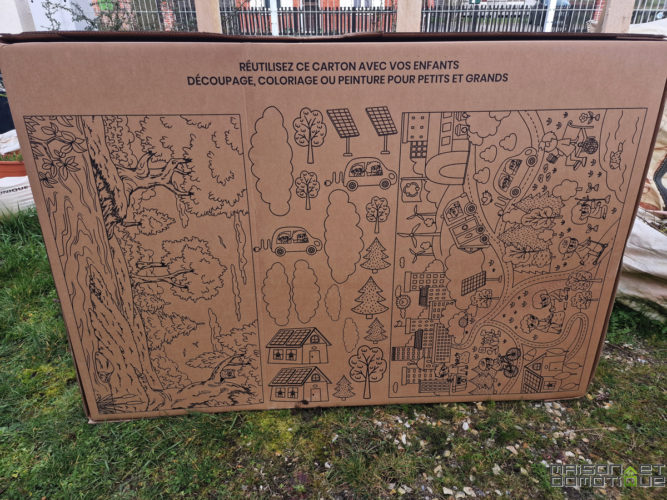
Only the electrical outlet and its 4m cable extend from the system. Here, the manufacturer didn't skimp on quality, either in terms of the cable section or the IP44-certified plug. It's solid!
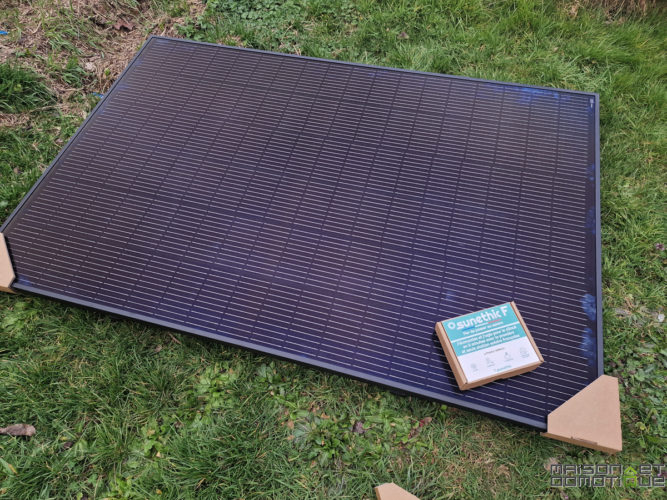
The last element: the ApSystems communication box. No Chinese smart plug here to monitor the station's electricity production. The manufacturer directly exploits the capabilities of the microinverter, which is capable of native wireless communication (ZigBee). You simply need to install this box inside your home: it will communicate wirelessly with the microinverter and connect to the home's Wi-Fi to send production information to the mobile app.

The box can be wall-mounted if desired.
So let's move on to the installation of this Sunethic F800 station…
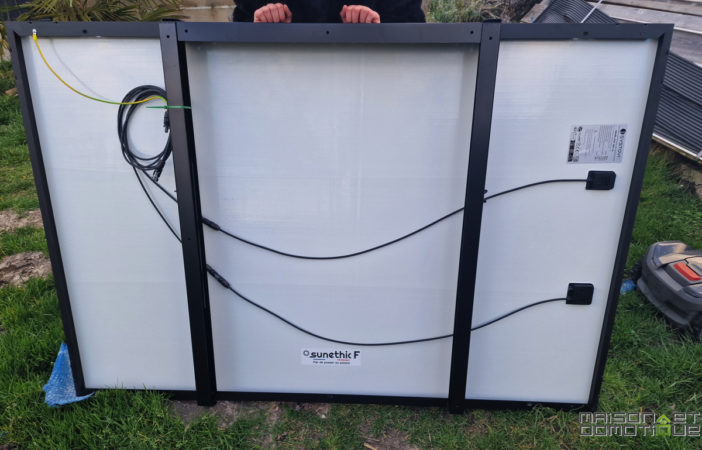
Installation of the Sunethic F800 Plug & Play Solar Station
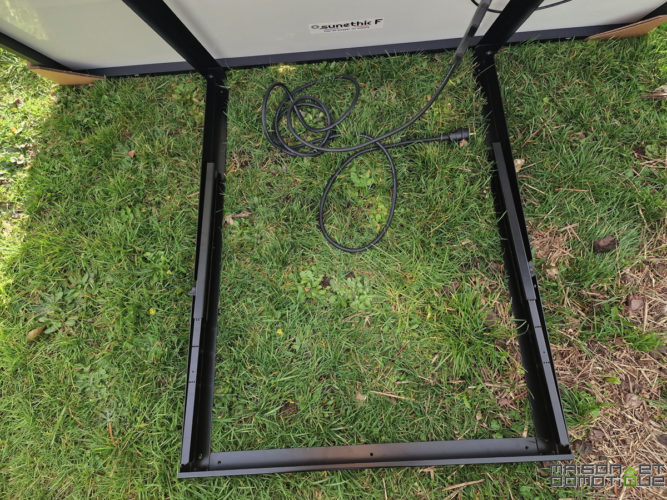
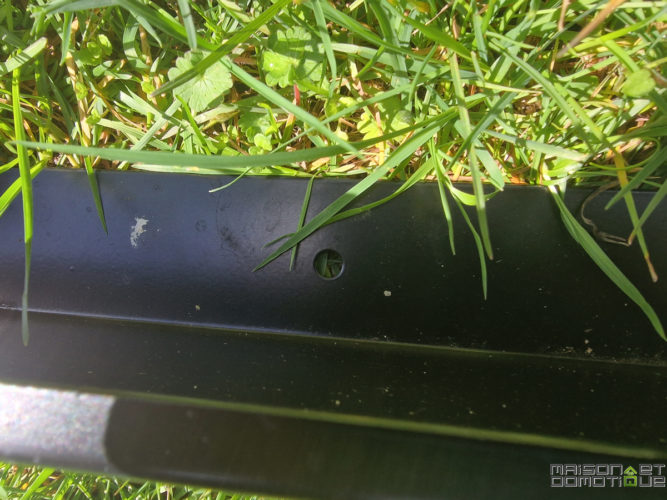
You'll need a 13mm wrench to tighten the nut.

Then position the solar station in the desired location, well exposed to the sun, ideally facing south. Adjust the panel's height to give it the correct orientation. As mentioned above, the Sunethic F800 station can be positioned at any angle. Two “knobs” on the vertical bars at the back allow you to slide the mount into the desired position. Simply unscrew them slightly, slide the arm to the desired height, then tighten:
This system allows you to slide the support bar to adjust the panel's tilt.
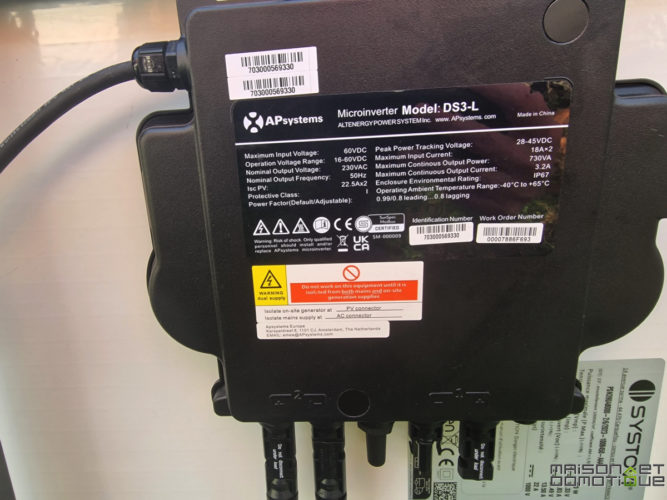
It's a simple and ingenious system, as it allows you to change the panel's tilt depending on the season. We know that the sun is lower in winter than in summer, so the optimal position for the panel will vary. Here are three examples of the three commonly used positions:
Winter position
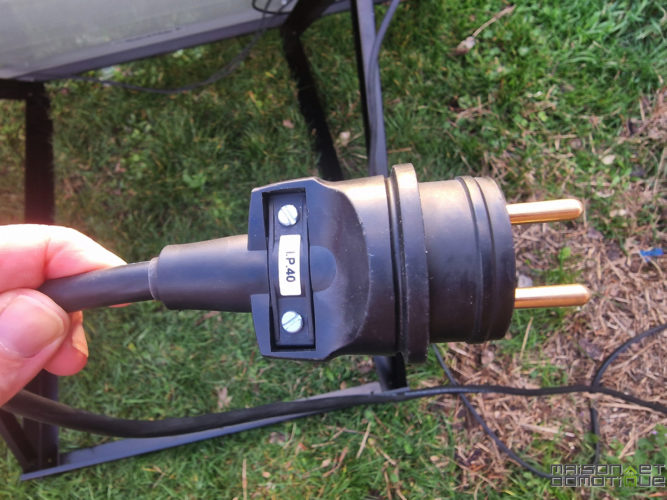
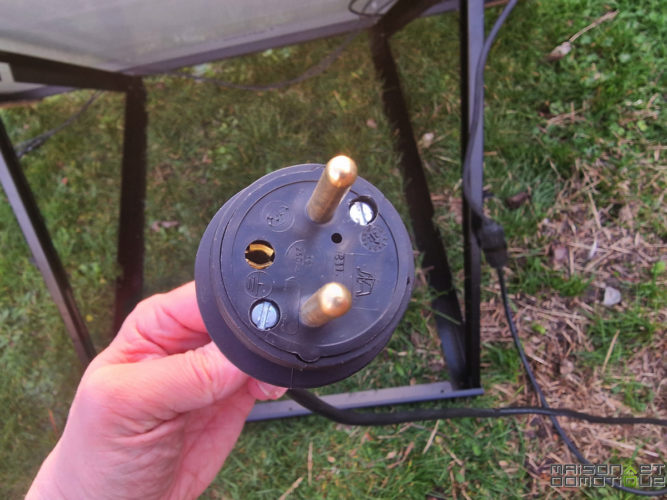
Intermediate position: spring/fall (only the first panel was tilted for comparison)
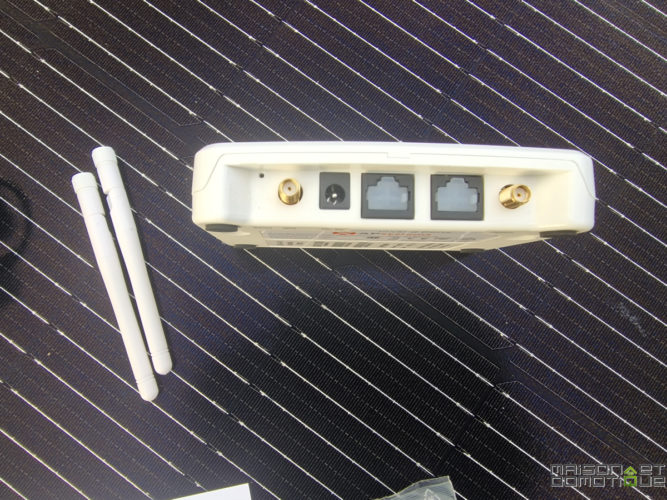
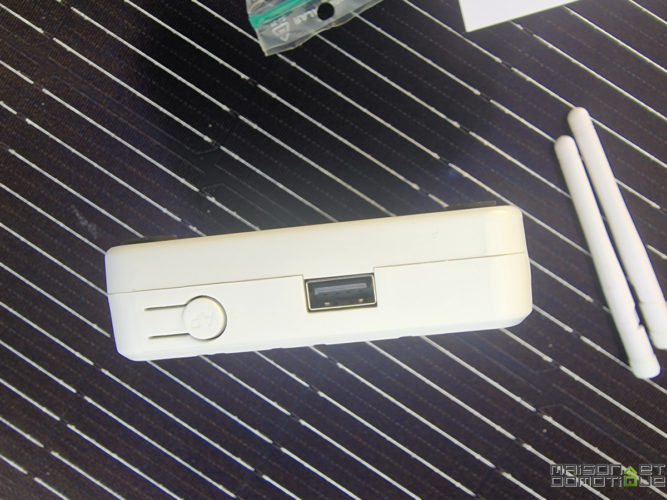
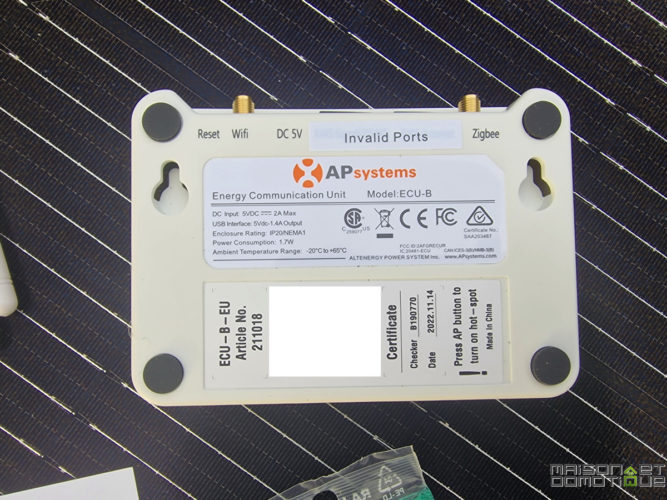

For ballast, you can place four concrete slabs (the type used for patios or walkways, for example, measuring 40x40cm and costing around €3 each), since the supports have edges to accommodate them. Here I've placed some wall tops I had in stock:
You can also attach the panels to the ground if you prefer, as the supports have several holes for screwing.
You'll also need to connect the second panel to the microinverter. There's no risk of making a mistake, as the panel uses the well-known MC4 connector. The plugs cannot be interchanged.
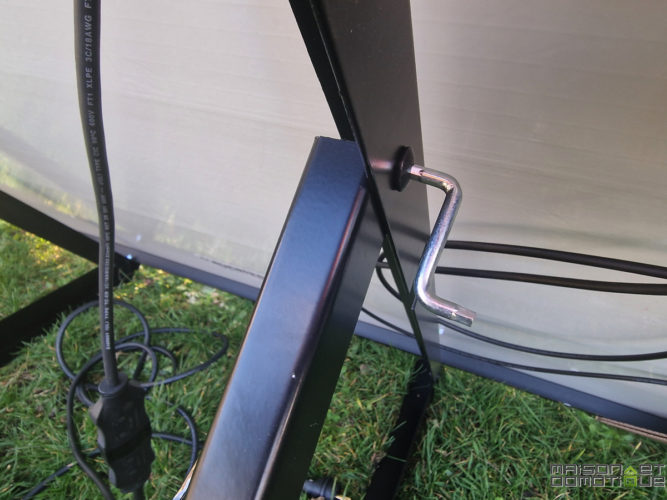

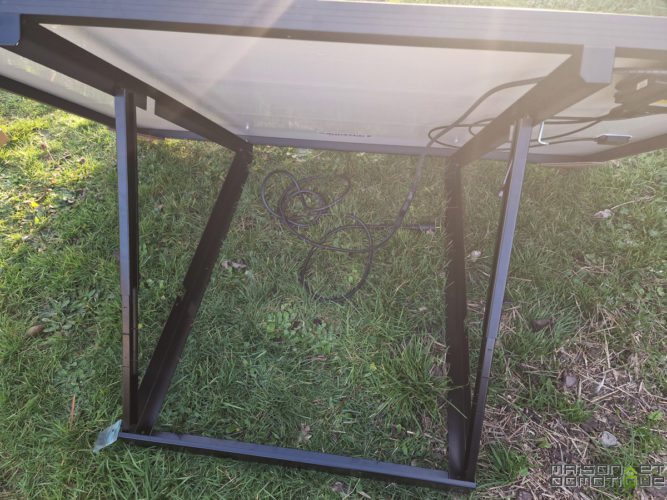
The 4m cable will then provide enough space to connect the panel to a nearby electrical outlet. Note that a small tool is included to disassemble the electrical cable if necessary, especially if you want to route it between the panel and its support:

Entirely black, both on the support and the photovoltaic panel, this station is rather “classy.”

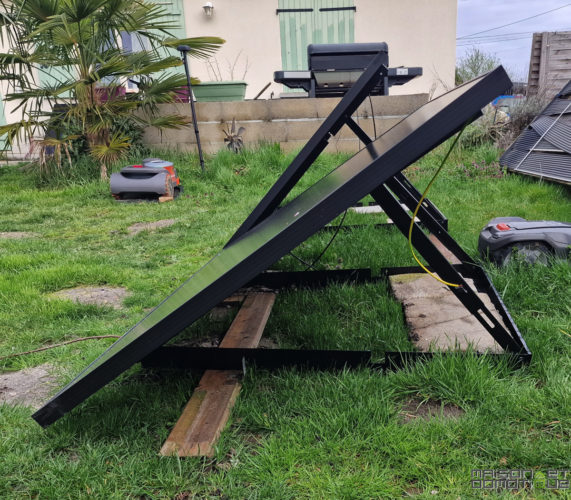
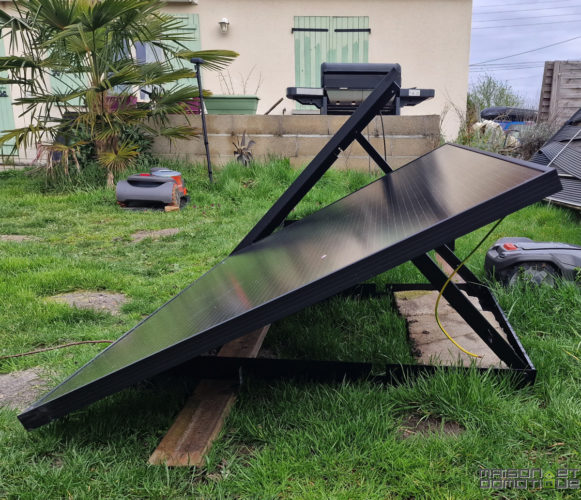
The mobile app
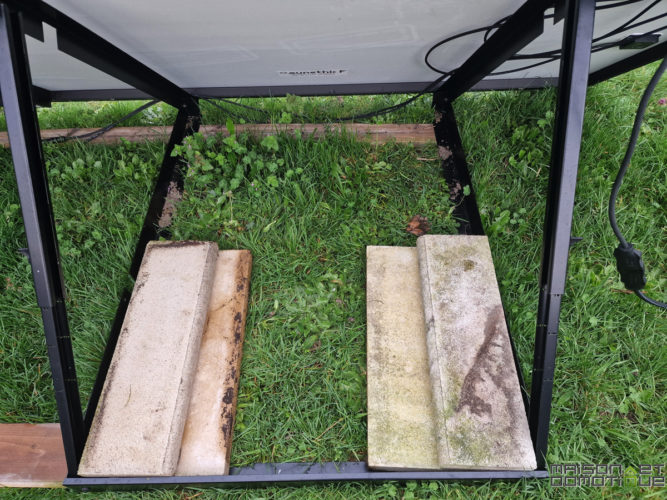
Last step: install the mobile app to monitor your production. Well, it's better to use two mobile apps: one for configuration, the other for viewing. Sunethic uses the official inverter app here, usually installed by a professional. Installation is a bit more complicated than with competitors, but a step-by-step procedure is provided, and the end result is a complete and stable application. You'll need to start by plugging the ApSystems unit into an electrical outlet, then install the EMA Manager and EMA App applications:
Once the EMA Manager application is launched (without logging in yet), you need to press the App button on the ApSystems unit, which will generate its own Wi-Fi network, such as ECU_B_xxxx. Connect to it.
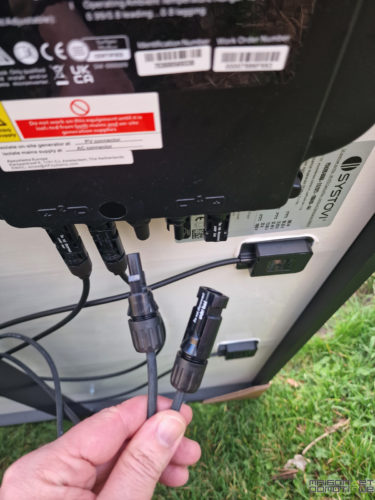
Back in EMA Manager, click on “Local Access.” As you can see, the unit isn't connected to the internet:
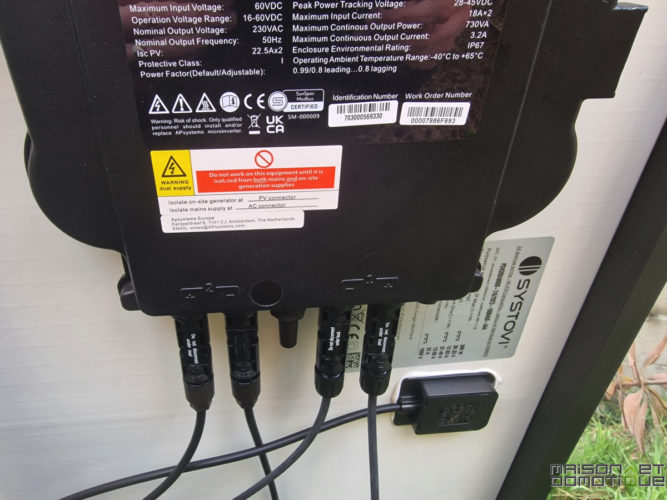
So, go to the “Desktop” tab, then date and time settings. Synchronize the time. You can then adjust your Wi-Fi network settings.
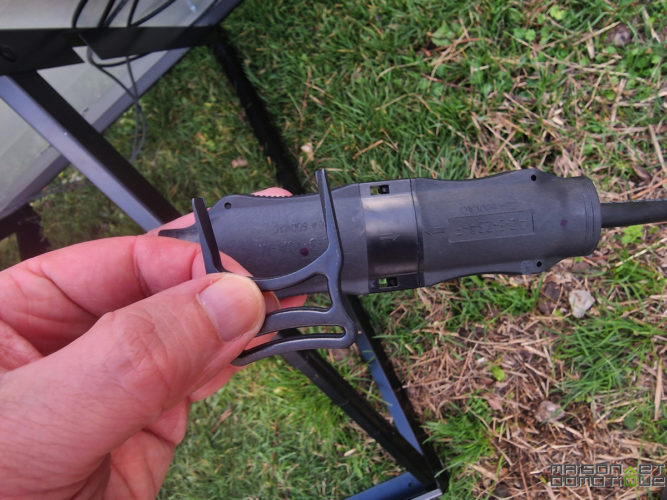
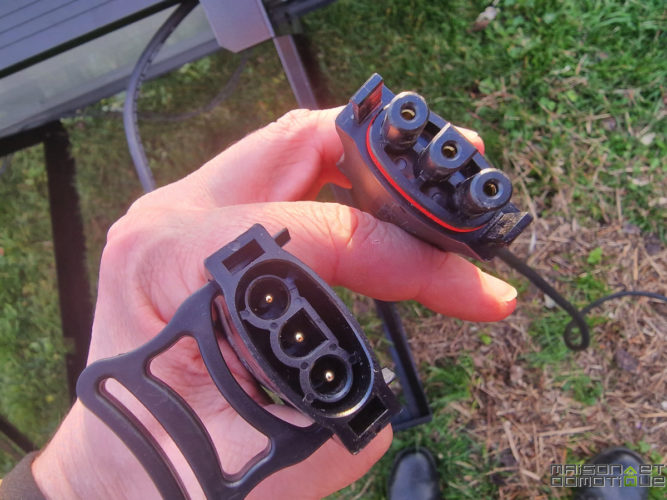
After a few moments, the box should display a good internet connection:
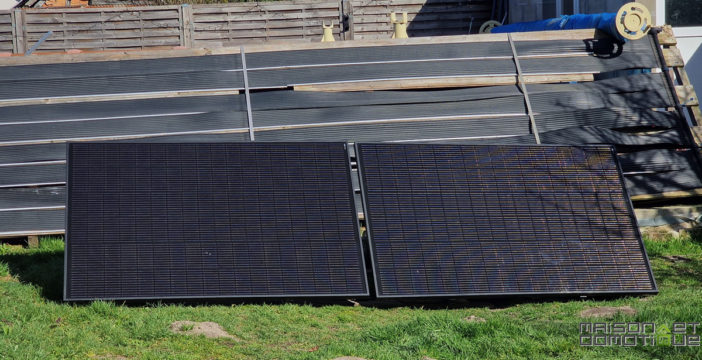
Next, follow the procedure to create an account and enter some information.
After configuration, you can use the EMA App to track your production in real time. You can view the instantaneous power, production since the start of the day, production since commissioning, etc., as well as, of course, the history for the day, week, month, and year:
Sunethic F800 Solar Station: How Does It Work? If you're new to this type of self-consumption station, you might be wondering how it works? Solar panels that plug directly into an electrical outlet? Doesn't plugging a power source into an outlet that's already powered risk tripping the meter? Etc. You should know that an electrical outlet works both ways: when you plug your toaster into the outlet, you draw power; If you plug a solar panel into the same outlet, the current flows back the other way to your meter. If it encounters a device that consumes energy along the way, it will offset all or part of it. If you produce more than you consume, the surplus will benefit your nearest neighbors.
This works based on two things.
First, the inverter synchronizes with the electrical grid to operate. As a result, it won't work in the event of a power outage (which is unfortunate, but also provides safety for those who work on the electrical grid), and it can't work in an isolated location that isn't connected to the electrical grid (like my property deep in the woods).
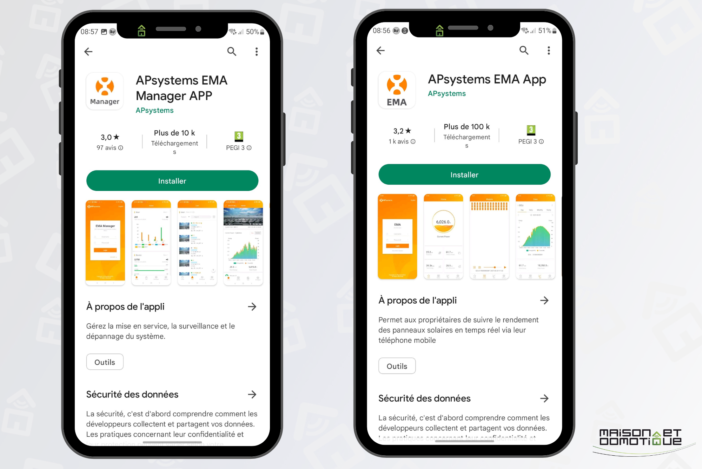
for example). On the other hand, this also prevents electrocution if you touch the kit's plug: as long as it isn't synchronized with a mains outlet, no current flows. So, there's no risk for children either.
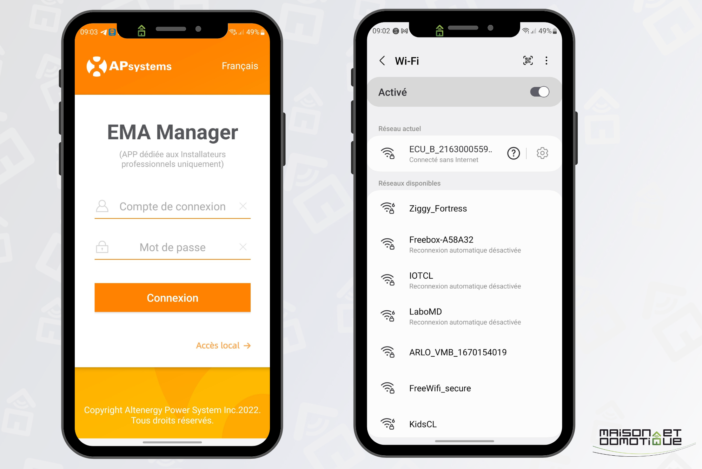
Then, the system relies on a simple rule of physics: electrons take the shortest path. Like any fluid, in fact.
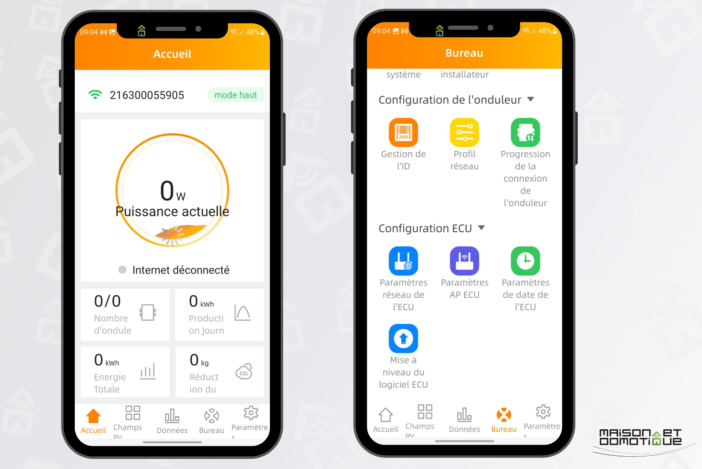
In practice, solar panels capture the sun's rays and transform the photons into electrons. The inverter, synchronized to the electrical grid, injects the solar electrons into the home's electrical circuit. The solar electrons diffuse and power the nearest electrical appliances that are consuming at the same time. Thus, for each solar electron produced and consumed by a device in the home, it's an electron from the electrical grid that doesn't pass through the meter, and is therefore not billed. When discussing solar power stations with one or two panels, we often encounter comments that it is impossible to be self-sufficient with this type of station. Of course! That's not the purpose of such a solar station!
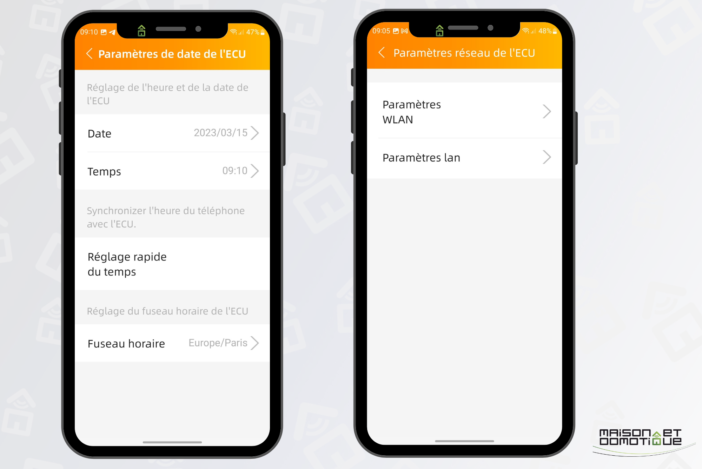
The goal isn't to produce as much electricity as we consume each day, since that would require a much larger and more expensive installation. The goal is to eliminate your home's “electrical tail.” The electrical tail is your home's minimum electricity consumption, which is present no matter what, even when no one is home. It corresponds to the consumption of the refrigerator, internet box, home automation box, VMC, appliances on standby, etc. If you don't turn on any specific device, and you take a look at your electricity meter, you'll see that it still displays an electricity consumption that generally varies between 300W and 600W. The consumption tail represents 10 to 20% of your annual energy needs, or between 300 and 1500 kWh per year! This is the consumption we're trying to eliminate with the Sunethic F800 plug&play solar station. If your electrical output exceeds 600 to 800W, it's possible to increase the number of stations, up to 8 panels, or 3200Wp. The manufacturer offers various configurations, with 1, 2, 3, 4, 6, or 8 panels.
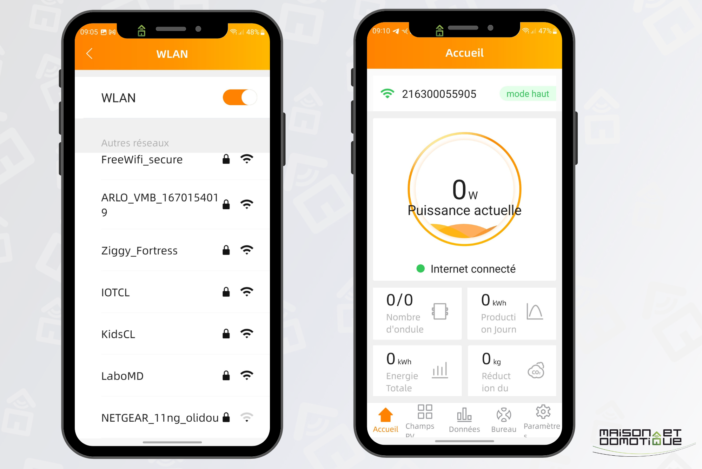
And what about the regulations?
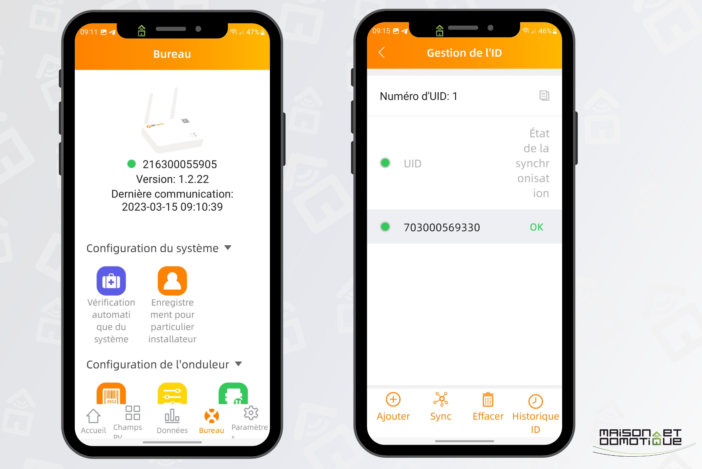
The strong point of the Sunethic solar station, like the solar stations already discussed, is that it can be installed anywhere, without complicated formalities. If the panels are installed on the ground or less than 1.80m high, no declaration is required at the town hall.
The manufacturer explains the different scenarios on its website, and we already wrote a post dedicated to solar panels and taxes to sort out the facts from the fiction.
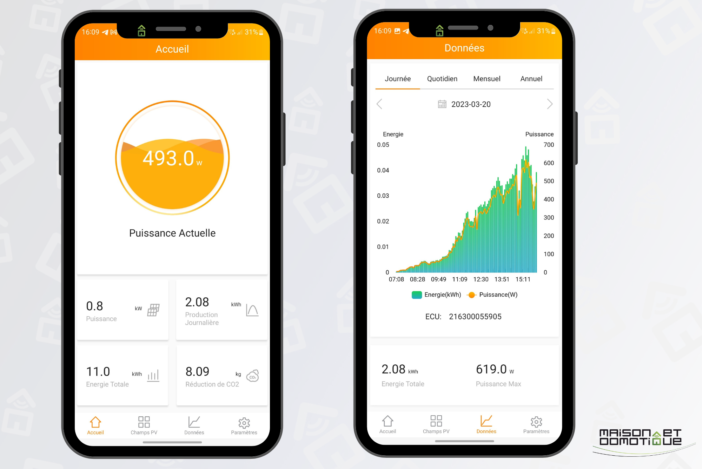
The only thing to do is to sign a Self-Consumption Agreement Without Injection (CACSI) with Enedis, the company that manages the electricity grid. The declaration can be made directly online at https://connect-racco.enedis.fr/prac-internet/login/
The free declaration takes less than 10 minutes, with the manufacturer providing all the necessary information on its website.
The big question: profitability
Obviously, this is the first question that comes up every time: what about profitability? Because the Sunethic F800 solar station, consisting of two panels, still costs €1,300. A price that may seem a bit high when you consider the price of a 400Wp panel and an inverter. But we have the advantage of having a Plug&Play product, ready to use in 5 minutes, with French hardware, tested, proven, and guaranteed, multi-installation design support, and of course, French after-sales service.
Beem Review: The DIY solar kit to save electricity! 48
After a great February, March remains sluggish… Getting back to profitability, I'm based near Orléans. For this region, statistics indicate an average production of 970 kWh/year (this site allows you to get an estimate based on place of residence, orientation, etc.).
Of course, geographic location has a significant impact, since in the Var region it is possible to increase production to 1,400 kWh/year. A significant difference!
In Orléans, with an average of 970 kWh per year, and at a rate of €0.2414 per kWh (currently the EDF rate during peak hours), this represents a saving of €234/year.
Let's not forget the annual increase in the cost of electricity. Despite recent increases, we are still among the cheapest countries in Europe. But the price of electricity in France is expected to soon catch up with the average for European countries. By 2030, the increase should be at least 50% compared to 2020, or between 3 and 5% per year to achieve this goal. And that's unfortunately a minimum :/
Therefore, if we take into account a 3% increase per year (remaining very optimistic):
(2023) the savings in the first year would be €234
(2024) second year: €241
(2025) third year: €253 (2026) fourth year: €265(2027) fifth year: €279 (2028) sixth year: €292 This gives us a total of €1,564, or the product's depreciation after just 5 and a half years in my case. This may seem long to some. But with solar power, you shouldn't expect dazzling profitability today. It's all about the long term, as panels have a lifespan of over 25 years. In more southern regions, where there are more sunny days, production could increase to 1,400 kWh/year, which shortens the depreciation period to around 4 years. Of the kits already tested, this is one of the ones that pays for itself the fastest. It must be said that it offers a good cost-to-production ratio. And the higher the price of electricity rises, the faster the payback will be. And, without wishing to sound like a doomsday bird, the price of electricity is likely to rise by well over 3% per year in the coming years. This solar station is therefore a long-term investment, which should even pay for itself much more quickly than predicted here.
Then, aside from the financial aspect, as I always say, solar is also a conviction. As you know, I've had solar panels on the roof of my house for 13 years, with a resale contract to EDF. And on my isolated plot, without a connection to the electricity grid, everything is powered by solar panels. If I could be totally self-sufficient thanks to solar power, with an installation within my means, I would be the first to sign, if only to free myself from dependence on an external network :p In short, personally I am convinced. Some will shout about the ecology, but the manufacturing process for panels and their recycling has evolved considerably in 10 years, especially since Sunethic has taken care to opt for “local” products, thus minimizing the carbon footprint. Most panels are now certified low carbon: after one year of use, the energy required for their manufacture has been offset. As for recycling, this panel is 95% recyclable. And things will have evolved further by the time it's scrapped, as its lifespan is given as 25 years by the manufacturer. But in reality, a photovoltaic panel has an enormous lifespan, and even if its production declines over time (80% efficiency guaranteed after 25 years), a panel can still be used for many years beyond its official lifespan. I know people who use panels that are 40 years old and still work perfectly, even though the technology was far inferior to today's. Bonus: native Jeedom compatibility! Another advantage of using a renowned inverter brand is that developments are possible. This is particularly the case with Jeedom, which has long benefited from an ApSystems plugin (sold for €4): Simply install the plugin, create a new device by specifying the IP address of the previously configured ApSystems box, and you'll instantly retrieve all the information from the inverter, for each panel:All the data can, of course, be used to generate reports, create scenarios, etc.
No need to add a compatible smart plug to upload production to your home automation system; the Sunethic F800 station is natively compatible with Jeedom thanks to the ApSystems plugin!
Of course, this is completely optional, but for those with a home automation system, it could be another argument in favor of Sunethic ;-) ConclusionI discovered the principle of solar stations a little over two years ago now. It was a bit of a shock for me when I discovered the idea, which I thought was excellent. Of course, while researching the subject, I quickly realized that several companies offered easy-to-install kits based on the same principle: we've already discovered Sunology, Beem, Supersola, and even ekwateur. Compared to the four previous kits already presented, the Sunethic F800 solar station comes out on top, almost tied with its direct competitor, Sunology. The product is perfectly finished, practical, and easy to install. It's truly a solution within everyone's reach, extremely easy to install (you just need to know how to plug a device into an electrical outlet, which is normally within everyone's reach ;-). I particularly like its versatility, which allows it to be placed on the floor or fixed to the wall, without worrying about choosing the right model when ordering, or having to add options. But above all the possibility of tilting it as desired, over the seasons, to always maintain optimal production. Arguments that we had already highlighted with Sunology, which on these points is equivalent. However, the support offered by Sunethic is more robust, the application directly uses the inverter data, more precise, and the “ethic” side is also an important argument for me. All this for a price that is practically identical, since for an equivalent configuration, the price difference is only around fifty euros (for a cost per watt of €1.64 for Sunology against €1.75 for Sunethic).
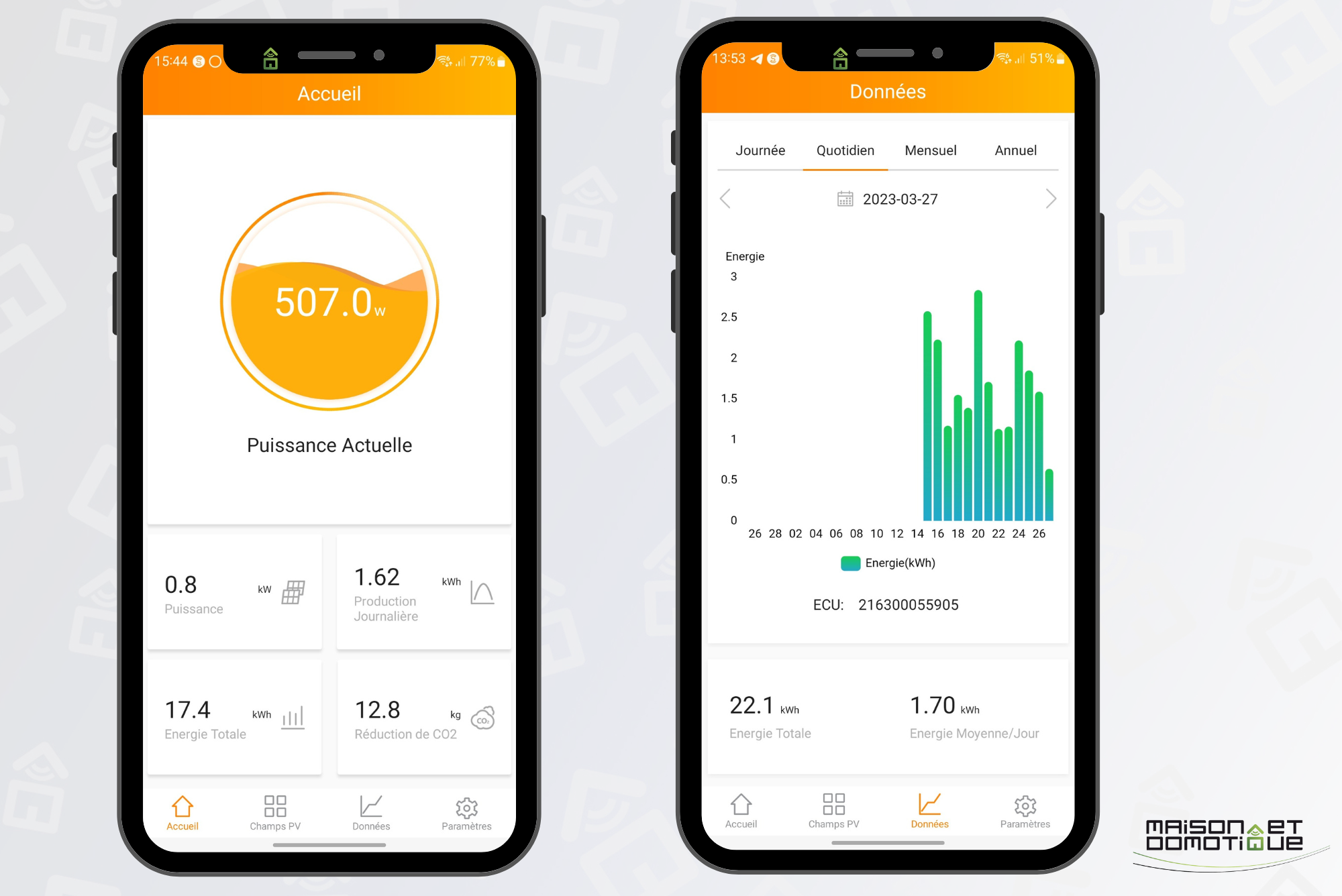
So, should you invest in such a station? It's impossible to predict the future, and everyone will act according to their own beliefs. Personally, I'm convinced, and I simply base my decision on this investment rule, which I find very appropriate for photovoltaics:The best time to start investing was yesterday, the second best time is today, and the worst time is to wait until tomorrow.This is especially true given the current situation surrounding the rising price of electricity, which has been skyrocketing for several months, leading to the bankruptcy of small alternative suppliers. The only thing we know for sure today is that the price of electricity will continue to rise regardless. But this station, once purchased and installed, will continue to produce in the same way, unaffected by the market, inflation, war, politics, etc. Of course, technology is constantly evolving, and new panels will undoubtedly be released with even better yields. But by always waiting for THE best product, we never take the plunge. And given the current situation, this type of plug-and-play solar station is, in my opinion, one of the most sustainable investments possible.

Note that if this Sunethic F800 station represents too large an initial investment for you, the manufacturer offers
a single-panel version at 400Wp, priced at €750. You will then be able to add an extension later, at a cost of only €700.
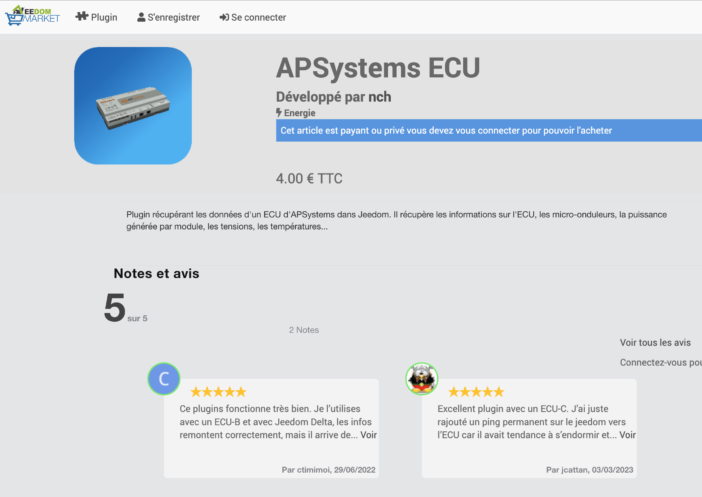
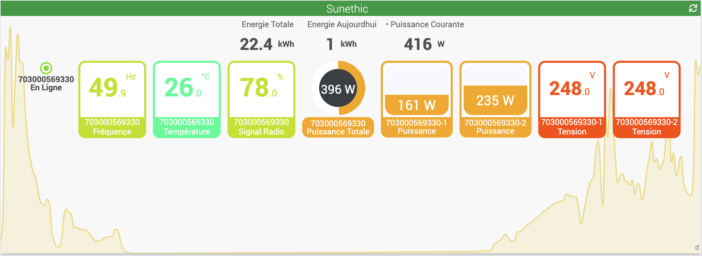
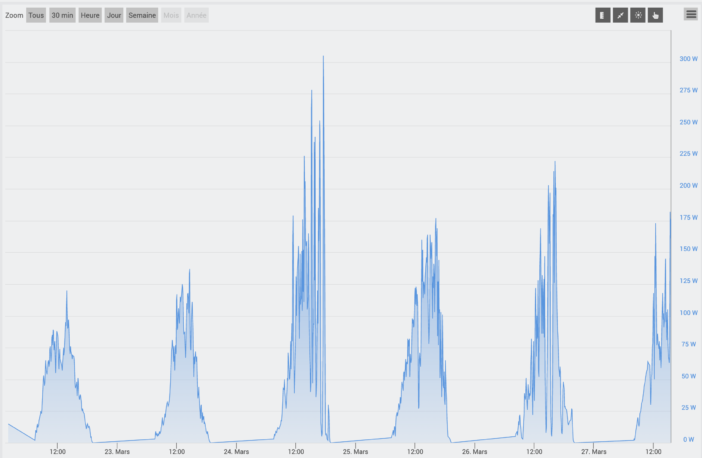



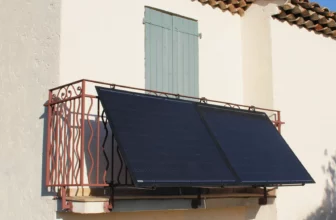
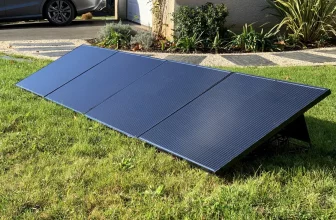
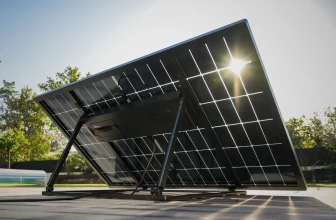
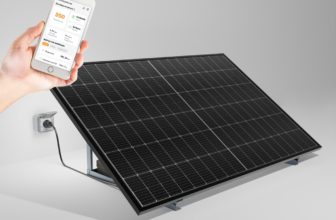

Please remain courteous: a hello and a thank you cost nothing! We're here to exchange ideas in a constructive way. Trolls will be deleted.